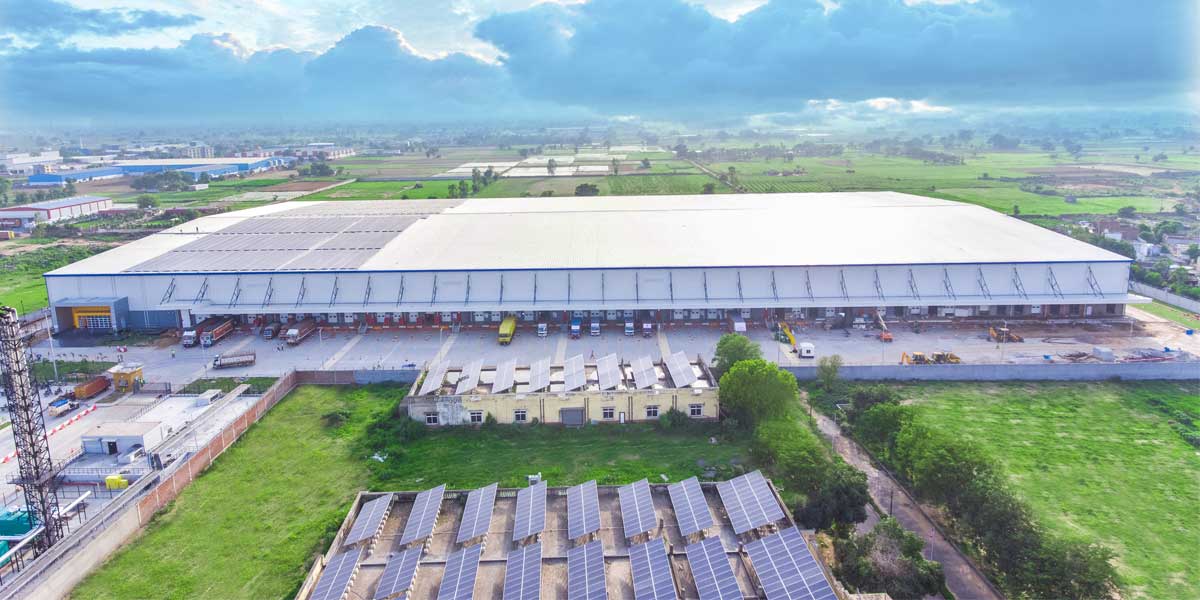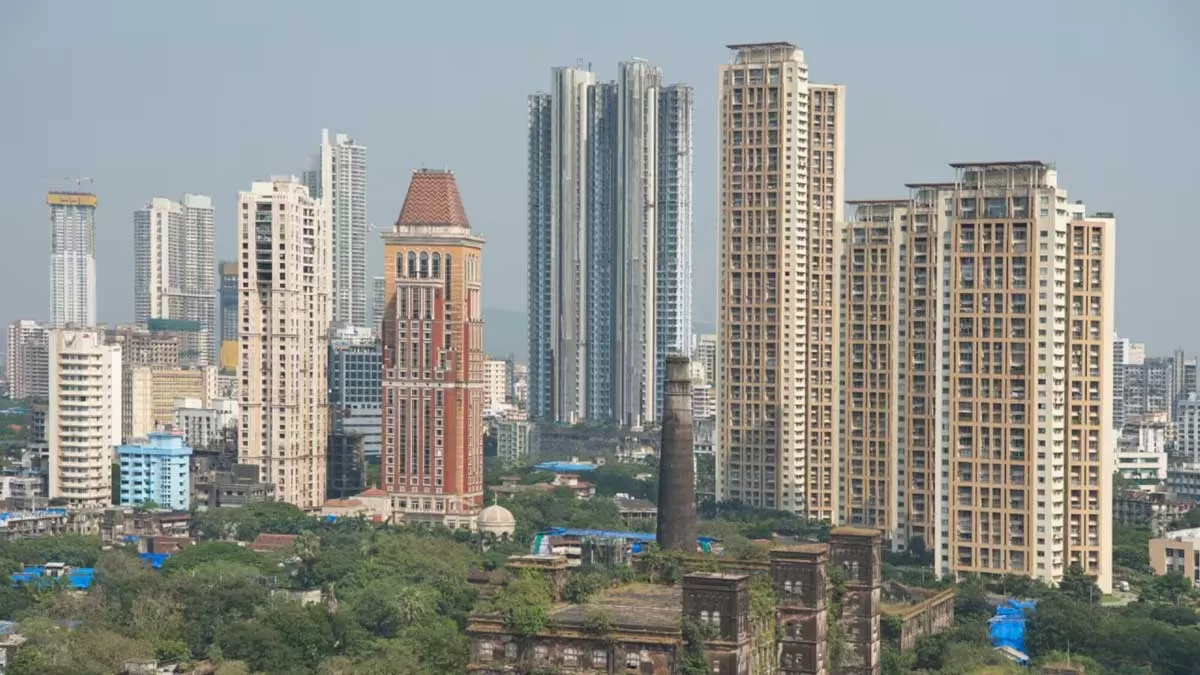Think of a ‘warehouse’ about a decade ago and you would envision a dusty godown with no proper infrastructure, design or inventory. Things are very different today! Warehousing has emerged not only as an important segment in infrastructure but a value asset class. In fact, in this segment, Grade-A properties are now in demand owing to adherence to additional hygiene and safety norms. Notably, more than half the absorptions in 2020 were in Grade-A spaces. And third-party logistics (3PL) emerged as the largest occupier of warehouse space in 2020 followed by e-commerce, jointly contributing to almost 60 per cent of total absorptions last year.CW recently held a virtual roundtable on the sector to discuss its growth prospects, how automation and technologies are driving demand, the challenges faced, and more. Here are some of the learnings.The marketThe warehousing sector was at its peak in 2019, having witnessed absorption of about 35 million sq ft in 2019. COVID-19 broke out just as it was poised to cross that mark. However, it was also one of the fastest sectors to recover from the pandemic.Overall warehousing space stood at 238 million sq ft at the end of 2020 compared to 211 million sq ft in 2019, according to a report by JLL India—a net supply of 27 million sq ft. As per the report, 2020 witnessed a net absorption of 22 million sq ft.Valued at Rs 1,050 billion in 2020, the Indian warehousing sector is expected to expand at ~14.86 per cent CAGR between 2021 and 2025, to reach a value of Rs 2,028.86 billion by 2025. Interestingly, warehousing and cold storage space occupation in India increased by ~77 per cent from 2019 to 2020.“To tackle the situation after the lockdown, the industry has laid a lot more emphasis on overall supply chain resilience,” says Shyam Arumugam, Managing Director, Industrial and Logistics Services, Colliers. “And the kind of rebound or resilience this sector has shown is far more than any other sector would have.”Where’s the demand?The market’s growth is triggered by the robust expansion in India’s pharmaceutical, e-commerce and manufacturing sectors. The COVID-19 pandemic and consequent lockdowns have brought e-commerce to the limelight. And there has been a shift in the behavioural pattern of consumers as far as e-commerce is concerned. The emergence of 3PLs and supergrid logistics is expected to further fuel market growth.While several reasons have propelled growth, the Goods and Services Tax (GST) has been one of the most important reforms that triggered the growth of warehousing. With the introduction of GST, warehousing strategy changed and warehouses were built on supply chain efficiency rather than tax-saving considerations.Granting infrastructure status to the logistics sector was another policy boost. Allowing 100 per cent FDI in warehousing has also led to much institutional interest in warehouse development and operations. And the increased infrastructural spending envisaged in Union Budget 2021 is also a fillip. Moreover, technological advancements such as warehousing automation and robotic mechanisation are expected to revolutionise the market.Shift in user preferences“‘Where should we locate ourselves?’ ‘Is there enough good quality supply? These are questions that Amazon, Flipkart or large companies ask us when they want to take up space in India,” shares Arumugam. “Players like Welspun One are doing a great job today, but we didn't have players like that back then. On the supply side, there has been a good inflow of developers who have filled the vacuum to bring in quality supply that is world-class and compliant with buildings built for the next 10-20 years, which augments capacity building. On the demand side, many people didn't understand the taxation structure of India, which led to a lot of fragmentation in the industry. After GST, there is quite a bit of consolidation. But today, we are wondering whether it has to be all eggs in one basket or should we redesign the supply chain with the lockdowns happening in multiple states at various points in time—this is something that was not anticipated.”There is also a lot of innovation happening. For instance, pre-engineered building (PEB) is a critical component in warehousing. Earlier, heights used to be 8 m; now, a 15-m height has become standard. “Earlier, people would only ask about the rent of the warehouse,” adds Arumugam. “Today, they talk about how high they can go, how many levels of racking they can put in to utilise the entire space, how much floor loading and docking space is given, and so on.” Thus, the advent of organised players has brought in layers and complexities. “Earlier, we were only talking about flight to quality in the sense of old rundown buildings becoming swanky, clearly organised well-planned layouts with good infrastructure,” he says. “Today, we have gone to the next level. We are talking about automation, technologies and sustainability. Especially during COVID times, frontend and backend processes have been completely automated as a lot of social distancing is required and hygiene protocols have increased.”Huge hurdle: High land priceAmong the biggest hurdles for warehouse building are uncertainty in terms of land acquisition, unavailability of feasible land, high land acquisition prices, lack of adequate warehouse infrastructure and the time and efforts needed to deal with multiple state authorities for approvals.Land price amounts to approximately 30 per cent of the cost of a warehouse project, as per a CARE Ratings report in April. Need for large capital and issues related to land acquisition have also tempered the growth of the sector. However, with expected increase in investment by international players, the gap in funding requirements is expected to be addressed in the near future, predicts the report.Alakesh Roy, Managing Director, Zamil Steel, believes the only caveat about this industry today is that rentals are more or less standard. “Considering the price escalation in steel and the price of cement and land, this rental will become unsustainable over a period of time,” he says. “Even today, it has become unsustainable for new projects. How it will affect future growth is something the warehousing sector will have to manage.” Those who have already invested will have an advantage over new players. “Whether it will prove to be a deterrent for new players, we have to wait and see. But there definitely cannot be this level of project pricing, with steel and cement almost doubling and the difficulty for manpower to move in and out of states.”Agreeing that input prices keep changing while rentals stay static, Arumugam shares a common question Colliers faces from private equity (PE) funds investing in India and developers: ‘Why won't clients pay more for quality infrastructure?’ He, too, believes that after a period of time, it becomes an unsustainable model. “But eventually I think prices will start going higher for quality products and people will start talking about value rather than price,” he adds on an optimistic note.The unorganised sectorThe domestic warehousing market is highly fragmented with most warehouses having an area less than 10,000 sq ft. Approximately 90 per cent of the warehousing space in the country is controlled by unorganised players, who manage small-sized warehouses with limited mechanisation, according to the CARE Ratings report. A fragmented warehousing footprint results in higher average inventory holding, in addition to higher storage and handling losses driven by lower level of mechanisation.One of the biggest reasons for the existence of so many unorganised players is the complicated nature of India's land market, which drastically varies from state to state, observes Akshat Khandelwal, CEO, Skymettle Infrastructure. “If the Government wants warehousing to boom in India, they have to start clearing up the land market. And this cannot really be done at the national level because each state has its own regulations.” States that want to promote warehousing should have their own policies, frameworks, single-window clearance and, most important, fix their land markets. “If a state can get that right, there will automatically be a huge boost to warehousing.”Other challengesThere are also several issues in the warehousing sector where cost comes into play. As Roy explains, “If you look at the payback for any investor today, what was earlier five years has gone to seven years and then nine years, and the lock in has reduced from nine years to five years. At the end of the day, if the economics have to work out in nine years’ time, people will be more sceptical about investing anyway.”According to Roy, if you are someone managing the asset, you can still make 4-5 per cent return net at the end of the day, but if you are a developer and have started managing the asset, you'll have to be ready to take the hit. Why? Because according to him, the overall cost of maintenance that has to be incurred is almost Rs 15-16 – this with an income of Rs 16.Further, with electricity tariff being the highest in Maharashtra, Roy recommends that we need to be allowed solar power rooftop, which helps bring down the operation cost. He also states the need for transport hubs to facilitate e-tailing and warehousing.“Owing to COVID, people will have a rethink vis-à-vis operating costs and take careful steps towards the future,” he observes. Every project will have a relook. “Our backlog today is almost 60,000 tonne. Every project or project owner is having a second thought about going ahead. If this is the scenario across the industry, warehousing is no different.”Shifting focus from China to India?India is expected to present a formidable option for businesses worldwide as it gears up for the ‘next normal’ post-pandemic. But will industrial warehousing in the country boom over the next couple of years as manufacturing shifts out of China?Roy responds, saying, “If you look at the China shift, which are the countries that should have gained? India should have been on top. But the top two countries that have gained are Vietnam and Mexico.” Manufacturing has not come to India for various reasons. He goes on to explain: “Let’s take for instance the India growth story or Maharashtra’s growth story. Maharashtra wants to be a $1 trillion economy by 2025 and manufacturing activity or GDP has to go up from 16 per cent to 21 per cent. That means the whole setup or entire growth has to come into manufacturing. But our costs—for land, electricity or any others—are among the highest. The cost of putting up a business or cost of business per se is almost the highest in the world.”Besides, looking at the key economic indicators thrown up by COVID, “and what we have also raised with NITI Aayog,” says Roy, “is that we are only focusing on the supply side. We focused on the supply side in the last COVID period basically because the supply chain stopped. In this COVID period, people are not spending and not consuming. So it will be consumption at the end of the day that will drive growth. This has been a global phenomenon. India cannot be insulated from it.”On the other hand, Amit Malakar, Chief Customer Officer, Welspun One, believes India will see the boom, with or without China. “The consumption story will continue; India will get into better manufacturing. We see a lot of shift happening. So putting together multiple things—consumption, shift in consumption patterns, India's growth as an economy—there will be growth in the industrial warehousing space.”Khandelwal agrees with Roy that the movement of manufacturing from China to India has been overhyped. He adds that we don't understand why the Chinese do well. “They do well because they have complex industrial policies that work with their private industry and then make them export hubs. They go sector by sector.” In his view, most of the manufacturing will go to Vietnam. “I also think not as much will come out of China because last year the US recorded the highest rate of deficit with China. Having said that, the industrial warehousing story will still continue because the Indian Government has made it clear that it wants domestic manufacturing to cater to domestic demand. So while it may or may not be able to make India an export hub, it wants to ensure there is as much import substitution as possible.” Overall, he sees a positive outlook because Indian consumption and demand are high.For his part, Arumugam believes it should be read as ‘China + 1’, not just taking away business from China. “Also, the Government should endeavour to increase the competitiveness of India as a whole. We have many positives and a lot of places where we can up the game and get proactive in reaching out to opportunities. Apart from the race with China, we should see where our strengths lie and start working and improving on them.”Indeed, it’s time the Government and industry address the pain-points to help India emerge from its dusty godowns to modern warehouses.- SERAPHINA D’SOUZAAutomation to the ForeThe pandemic has brought health and safety protocols to the forefront and warehouses are finding ways to operate with reduced manpower, which has pushed them to speedily adopt automation.The modern warehouse is now integrating popular technologies, like Internet of Things (IoT), robotics automation, artificial intelligence (AI), augmented reality (AR), smart analytics, drones, blockchain and radio frequency identification (RFID). These are further expected to create lucrative opportunities over the next few years.But are warehouse developers open to adopting these technologies?The role of technology would be to essentially automate more and more processes that were being handled manually—starting with the basic ERP system in a warehouse and then moving steadily up to a warehousing management system where you start getting robots powered by AI, and so on.“The class of stakeholders that will benefit the most are operators, 3PLs and e-commerce players because their internal costs would come down,” says Akshat Khandelwal, CEO, Skymettle Infrastructure. “But from the perception of a developer, fundamentally things may not change substantially. Because the way we look at it is that we have land, we develop the land and then we tend to lease it out. We like to operate as little as we can when we build a warehouse because the demands of the kind of clients we service like Amazon, Flipkart, DHL, IKEA, and so on, are so gigantic that they have their own operation teams. It will constantly put pressure on internal costs for all the stakeholders that are operating.”However, for operators within the warehousing segments, particularly the Grade-A segments, internal processes would get tighter and they would have far fewer rejections and leakages because of how the algorithm works, observes Khandelwal. “When robotic machinery is moving goods around and filing goods in a proper manner and retrieving them when the order is placed, leakages are low. So there will be a huge optimisation of internal cost for operators.”Meanwhile, Meheriar Patel, Group Chief Information Officer, Digital Solutions, Jeena and Company, puts digital innovation into three buckets: intelligent demand planning, collective sourcing platforms and automated warehousing management. “Technology is the only driving force in a lockdown situation, where things are available online, so planning is one of the biggest aspects. The second part is collective sourcing platforms, where market intelligence is playing a big role. And last, automated warehouse management, where all the processes a supply chain major is talking about—offering end-to-end visibility, planning and operation in a warehouse where things can move in and out without much manual access—have to come together.”While he sees robotics replacing manpower happening, “it is a still a distinct theme for smaller operators,” says Patel. “When we talk about warehouse operation, it is IoT, AI, VR, barcodes being replaced by QR codes; so there is a great amount of technology upgrade in terms of service providers in the logistics and supply chain.” And automation will play a key role into moving up to the next scale.Role of a WMSA warehouse management system (WMS) helps warehouse operators track inventory and orders and provides data about the products stored that can also be transmitted back to the manufacturers.But how does all the tech mentioned above actually have an effect on real life, questions Amit Malakar, Chief Customer Officer, Welspun One. “Our endeavour is to marry the two: how infrastructure can be supported by tech, which in turn helps companies run smart operations.” A good warehouse can contribute a great deal to operations. For example, according to Malakar, as our whole trucking sector has evolved, the warehouse has to be geared up to handle these big trucks. You need dock automation because an hour wasted at the dock is a critical waste of manhours and real estate, and leads to a delay of one hour to the market. “So we are working backwards to ensure quick turnarounds. And while we are enabling infrastructure, there's got to be a technology input, such as IoT. Right from the time a truck comes into our logistics parks, as a user, as an operator, I would want to know where my truck is, when it will come to my warehouse, where is it in the parking lot, in which dock I get it. A good WMS tells me where my product is. And if anything is coming in from a truck, my transport management system should tell my WMS that it is coming in. Then, it should tell us which particular location to put it in and which orders should it fulfil. That's the whole connected supply chain we create.”He adds, “It is not robots alone; machine learning and AI are also helping. And it is also based on how smartly your building is designed to enable the movement of all these robots having RFID systems, having complete coverage of not only the warehouse but also the compound outside the warehouse.”Further, to ensure social distancing in pandemic times, he says a warehouse needs great power facility, Wi-Fi, drones and probably an alternative source of data connectivity. All these go together to make a good WMS.And what is fuelling modern supply chain excellence, especially in terms of warehousing? “You’re talking about optimisation, driving actionable insights, building agility and resilience, improving visibility and traceability and, of course, driving productivity and efficiency,” answers Meheriar Patel, Group Chief Information Officer, Digital Solutions, Jeena and Company. “You're talking about 8-15 per cent increase in productivity, especially in terms of growth factors that are going up on a very large scale—a almost 4x growth is happening.”When you talk about a WMS today, there are some necessities that a company should build in, he adds. Once this is done, additional aspects such as IoT, digitisation and the nuances that will add value to your running a successful warehouse can be added.Pre-engineering for WarehousesHaving closely been involved with developers when it comes to build-to-suit solutions, Shyam Arumugam, Managing Director, Industrial and Logistics Services, Colliers, says, “What gets discussed first is PEB. So, first is finding the PEB vendor who can deliver in the timeline.” One important part of the design aspect is that a lot of planning elements have changed in the way things get delivered. Thus, a lot goes into how effectively one plans for the delivery of the building.Warehouse buildings are increasingly getting bigger in size – they are mega buildings, like factories, avers Alakesh Roy, Managing Director, Zamil Steel. “In Bhiwandi, Maharashtra, you will see traditional brick-and-mortar warehouses as well as state-of-the-art warehouses aplenty. Heights are typically 15 m now. When you're gaining height, you gain intermittent floor space and the racking height also goes up, thereby increasing the pinch load and other technical requirements.”On the PEB front, we are a capex-based industry, adds Roy. “So we have to search for areas and avenues to grow. We had foreseen this for the warehousing sector way back in 2014 and accordingly started developing all our products towards these services.” COVID, too, will throw up newer avenues and business models. “Tomorrow, the rental model may not work; it can work on a buyout model,” believes Roy. “The problem is not that money isn’t available. Whether people are willing to spend and invest will be the major challenge.Investment ScenarioWarehouse lease tenures are getting longer, ranging from six to nine years and longer still in some cases. With increasing interest from global investors, the size of investment per deal has witnessed an increase of 25 per cent, growing to $ 282 million per deal in the three-year period ending 2019, compared to $ 225 million in a similar period ending 2016, according to a report by Knight Frank.With the advent of GST in 2017, there was a lot of organised deal-making in the warehousing space. “In the same year, we were looking at about $ 900 million, and in 2019 about $ 1,500 million came in as PE investment in the sector,” shares Shyam Arumugam, Managing Director, Industrial and Logistics Services, Colliers. This is largely because the uniform taxation structure brought in greater clarity. Also, projects in other segments have comparatively longer gestation periods, “whereas a warehousing project today gets delivered anywhere between seven and nine months, including approvals in most states,” he adds. Arumugam believes this year will see a steady pace of investment coming in, primarily because of the lockdowns being imposed and construction being a little delayed. “However, we all know that at some point of time we will return to pre-COVID levels and start building more,” he avers.Building CostsThe cost of constructing a good-quality, Grade-A warehouse structure varies between Rs 12,917 and Rs 19,375 per sq m (Rs 1,200-1,800 per sq ft) depending on the contour of land, according to a Knight Frank report. The cost of land in India varies by a huge margin depending on the location and quality of infrastructure near the land parcel. “If we consider the cost of construction (including cost of land) for a warehouse in India, it is unlikely to exceed Rs 26,910 per sq m (Rs 2,500 per sq ft). We have considered the higher side of the cost of construction at Rs 26,910 per sq m (Rs 2,500 per sq ft), for calculating the scale of new warehouse supply,” says the report. Accounting for the leverage on construction finance, PE investments of $ 5.8 billion for new development are estimated to create warehousing space of over 300 million sq ft.Reducing Logistics Cost, and How!India’s objective is to bring logistics cost down from the current 14 per cent to 7-8 per cent of the GDP in the medium term. About 50 per cent of logistics cost lies in transportation, with the current reliance on roadways proving to be expensive and time-consuming, according to a JLL report released in May.A gradual shift from road to rail can bring down transportation cost by 45 per cent and travel time by 50 per cent, says the report. To enable this, the Government has developed the National Rail Plan, 2030, to enhance infrastructural capacity. The plan aims to increase the modal share of the railways in the total freight in India from the current 27 per cent to 45 per cent by 2030. The network of dedicated freight corridors (DFC) and high-intensity Indian railway corridors will contribute significantly to achieving this.Logistic Parks Gaining TractionSeveral state governments are announcing dedicated policies for the logistics sector and a large number of SEZs now mandate the development of logistics centres.Talking about the increasing investments in logistic parks, Amit Malakar, Chief Customer Officer, Welspun One, says, “In the past two years, we have generated a total investment of close to $ 7 billion in this space. Two years before that was roughly half, about $ 4 billion. So, we see in intervals of two years how bullish investments have been in this space in the country. Even now, if you look at the total warehousing stock of about 307-odd million sq ft, about 64 per cent is still Grade B and lower versus only about 10 per cent that would really be Grade A, which is essentially great infrastructure, good safety, and PEB, which is now the de-facto standard.”Further, as a large consumption market, India will continue having a requirement for storage and warehousing will continue to grow. “I’m sure we will see pretty high CAGR growth in investment in warehousing as we move forward,” he adds. “In fact, we have gone forward and raised Indian capital, where normally developers like us would raise foreign capital, and have allowed Indian investors to invest in this space.”How MHE is defining the profitability of warehouse operationsThe global material handling equipment (MHE) market was valued at about $ 30.5 billion in 2020, according to a report by Fortune Business Insights. The market is further anticipated to grow at a 7.2 per cent CAGR from 2021 to 2026.India, particularly, is evolving as a vital market for MHE—forklifts, stackers and reach trucks—with the growth in the number of warehouses and container freight stations. The MHE market in India is expected to grow at a 10 per cent CAGR during 2019-2027. Advanced technologies, with productivity, safety and reliability as the focus, are the main drivers that determine the specifications of MHE.In a warehouse, MHE is used to manage movement, storage and transportation, and for control and protection of goods and materials. The equipment allows for cost-effective and efficient transition of goods across manufacturing plants. Now, most warehouses in India use four categories of MHE: industrial trucks; MHE for handling and storage; automated systems; and MHE for bulk material handling.Warehouse MHE forms the backbone of logistics operations. It is thus important to undertake routine inspections, servicing and replacement as an integral part of material management strategy. The MHE used in a warehouse defines the efficacy and profitability of its operations.The MHE industry is also fast embracing automation. The automated material handling (AMH) equipment market is projected to reach $ 76.8 billion by 2026 from an estimated $ 43.6 billion in 2021, at a CAGR of 12.0 per cent from 2021 to 2026, according to ResearchAndMarkets.com. Growing demand for automated storage and retrieval systems in e-commerce owing to the onset of COVID-19, increasing presence of start-ups offering robotic solutions for warehouse automation, rising popularity of AMH equipment among leading industries and surging labour costs and safety concerns are among the factors driving growth. In India, too, several MHE manufacturers are jumping on the automation bandwagon because they want to expand their business, and quickly.Asim Behera, COO, Daifuku India, shares more….“When you talk about MHE in a warehouse, it goes from a pallet to a forklift, to a battery-operated pallet truck (BOPT), to a dock lever, and so much more. Palletisation within the warehouse has happened quite a bit in the last decade. As a country, we are still to embrace it beyond the warehouse. But embracement of the pallet model has definitely allowed a lot of the forklift and BOPT companies to grow. Many international players have come in directly and set up manufacturing facilities in India to service the market.My journey in India started a decade back and we made a strategic call to focus mostly on automated storage retrieval systems because high-density storage and picking systems can be easier to embrace and understand for a lot of the people who were interested.E-commerce has played a huge role in the past four years in the adoption of AMH systems. More than 50 per cent of the demand in the Indian market right now is coming from the e-commerce sector and the rest is for high-density storage and picking systems. If you look at the market today, apart from manual material handling, the forklift, BOPT, etc, there's a huge amount of people who understand what this is. Now, as 15 m is the standard height for warehouse buildings, once you go 15 m and above, it is difficult for the human eye to pick and place pallets at that height. So you need equipment to do that safely. The adherence to safety has gone up and such equipment also adds to the safety factor.We have always counted on the availability of cheap labour. While that is still available, COVID has shown us that you cannot count on it all the time. Some customers who were the early embracers of such systems actually said that they now believed that the investment made in these systems five years ago has been worth it today, in this time. I am optimistic that this market is here to grow in India.”


















